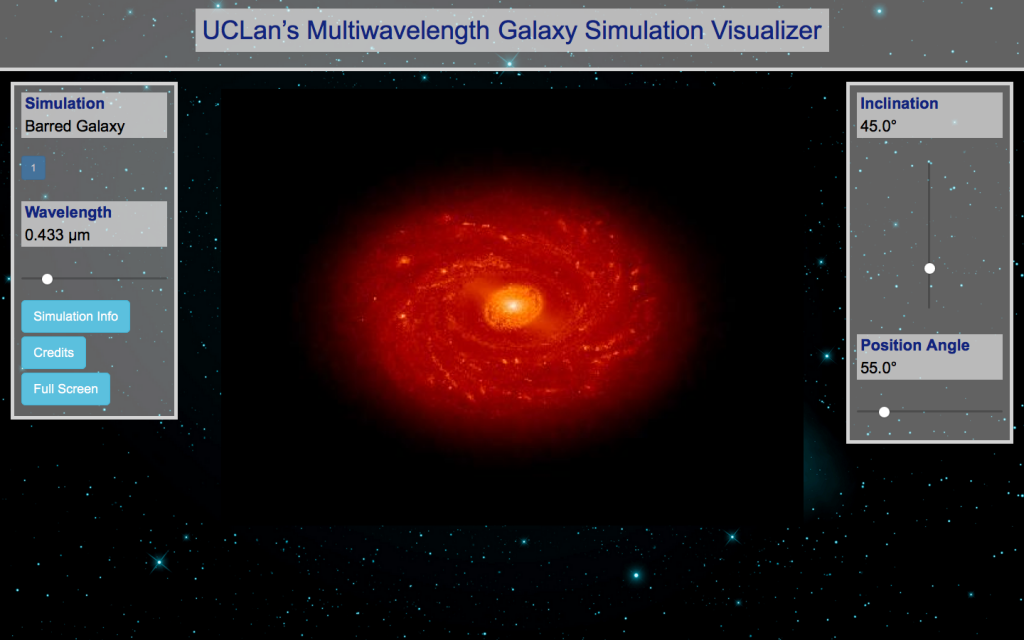
A new online tool to visualize how galaxies appear at different wavelengths and orientations has been developed by members of the JHI Extragalactic Research Group (Victor Debattista, Giovanni Natale and Cristina Popescu) in collaboration with an undergraduate student from the computing department (Aaron Cunliffe). The website titled “UCLAN’s Multiwavelength Galaxy Simulation Visualizer” is accessible through the following link:
http://www.star.uclan.ac.uk/mgsv/
The user of the website can move sliders to vary the wavelength of the galaxy image visualized, the “inclination” and the “position angle” (the latter two are two angles which define the orientation of the galaxy). In this way, the user can realize how the appearance of galaxies varies from the ultraviolet to the sub-millimeter as well as from face-on to edge-on orientations. This variation in appearance is due to the interplay of numerous factors, including the age and metallicity of the stars, the amount of interstellar dust and their distribution throughout the galaxy.
The galaxy images have been obtained by post-processing an N-body+SPH galaxy simulation, performed using the code GASOLINE, with the 3D dust radiation transfer code DART-Ray. By following the propagation of the light emitted by the stars in the galaxy simulation, realistic galaxy images have been obtained taking into account absorption and scattering of light by the interstellar dust as well as the re-emission of the absorbed radiation in the infrared regime.
